

Original Article - Year 2021 - Volume 36 -
Use of lymphatic taping to prevent the formation of ecchymosis in abdominoplasty and liposuction
Uso do taping linfático na prevenção da formação de equimoses em abdominoplastia e lipoaspiração
ABSTRACT
Introduction: Ecchymosis is one of the most common complications in the postoperative period of plastic liposuction and abdominoplasty surgery. Its treatment and prevention are part of the routine of the dermatofunctional physiotherapist. The objective is to evaluate the occurrence of ecchymosis in patients undergoing abdominoplasty and/ or traditional liposuction of the abdomen and flanks and statistically correlate these occurrences with the treatment of lymphatic taping during the operation.
Methods: Controlled clinical trial, composed of 20 female patients, aged between 20 and 60, divided into 10 in the control group (CG) and 10 in the experimental group (EG). All women had a surgical indication of abdominoplasty and/or liposuction of the abdomen and flanks. The CG was only evaluated preoperatively and on the 4th postoperative day, while the EG group was evaluated preoperatively, received transoperative treatment with application of lymphatic taping and was reevaluated on the 4th postoperative day.
Results: The experimental group presented a better response in the resolution of ecchymosis (p=0.01) when compared to the control group.
Conclusion: In this study, the use of lymphatic taping during the transoperative period of abdominoplasty and liposuction reduced or annulled the formation of ecchymosis in the postoperative period, contributing to the decrease in the number of physical therapy visits, the incidence of pain and thus accelerating the reestablishment of patients from abdominoplasty and/or liposuction surgeries.
Keywords: Postoperative complications; Lipectomy; Physiotherapy; Ecchymosis; Athletic tape.
RESUMO
Introdução: Uma das intercorrências mais comuns em pós-operatório de cirurgia plástica de lipoaspiração e abdominoplastia é a equimose, e seu tratamento e prevenção fazem parte da rotina do fisioterapeuta dermatofuncional. O objetivo é avaliar a ocorrência de equimose de pacientes submetidas à abdominoplastia e/ou lipoaspiração tradicional de abdome e flancos, e correlacionar estatisticamente essas ocorrências com o tratamento de taping linfático no transoperatório.
Métodos: Ensaio clínico controlado, composto por 20 pacientes do sexo feminino, com idade entre 20 e 60 anos divididos em dois grupos: 10 no grupo controle (GC) e 10 no grupo experimental (GE). Todas as mulheres que apresentavam indicação cirúrgica de abdominoplastia e/ou lipoaspiração de abdome e flancos. O GC foi apenas avaliado no pré-operatório e no 4º dia de pós-operatório, enquanto o grupo GE foi avaliado no pré-operatório, recebeu tratamento transoperatório com aplicação de taping linfático e foi reavaliado no 4º dia de pós-operatório.
Resultados: O grupo experimental apresentou uma melhor resposta na resolução da equimose (p=0,01) quando comparado ao grupo controle.
Conclusão: Neste estudo, o uso do taping linfático no transoperatório de abdominoplastia e lipoaspiração, reduziu ou anulou a formação de equimose no pós-operatório, contribuindo para a diminuição do número de atendimentos fisioterapêuticos, incidência de quadro álgico e acelerando assim o restabelecimento dos pacientes no pós-operatório das cirurgias de abdominoplastia e/ou lipoaspiração.
Palavras-chave: Complicações pós-operatórias; Lipectomia; Fisioterapia; Equimose; Fita atlética
INTRODUCTION
Brazil is considered the first country in the world ranking of aesthetic surgical procedures according to the International Society of Aesthetic Plastic Surgery (ISAPS). Liposuction represents 14% and abdominoplasty 7.4% of all surgeries performed. Women are those who most resort to cosmetic surgery, with 9.9 million cases in 2013, 85% of the total1.
Even though they are very common surgeries, abdominoplasty and liposuction frequently present intercurrences and complications2-4 such as ecchymosis. This complication motivates a treatment routine by a dermatofunctional physiotherapist who, over the past few years, has been looking for effective treatments to work in the pre, intraoperative and postoperative periods, preventing and treating bruises, so that there is a decrease in pain, severe edema, hyperpigmentations and possible disorganized fibrosis, which can impair the recovery of plastic surgery patients.
The ecchymosis is caused by microvessels’ disruption in the operative field, leading to intravascular extravasation to the adjacent soft tissues5. This can be a source of distress for patients, resulting in a longer postoperative recovery time and a delay in returning to work6.
The use of taping for the prevention and treatment of ecchymosis is not yet well evidenced. Chi et al. (2018) 7 report the prevention of ecchymosis using lymphatic taping in transoperative surgery, with a decrease in postoperative treatment sessions (PO), complications and intercurrences such as disorganized fibrosis.
A study with rats demonstrated a significant increase in epidermal-dermal distance in the group with the application of taping after trauma, thus observing a reduction in the area of edema and, consequently, an additional reduction in lymph fluid congestion or hemorrhages under the skin8.
Kane et al. (2000) 9 reported an important finding in their immunohistochemical studies showing that there is a reduction in the relative expression of Bcl-2 where taping was applied after trauma. As Bcl-2 presents an increase soon after the injury to allow cell proliferation and then has a reduction to interrupt the inflammatory process and regulate the proliferative phase. This finding confirms the importance of taping to reduce the inflammatory process after soft tissue injury.
Because of the above, this study proposes an unprecedented approach to the transoperative period using lymphatic taping, intending to prevent and/or minimize ecchymosis, thus possibly reducing the number of visits and accelerating the patient’s recovery and promoting early discharge.
OBJECTIVE
This study aims to evaluate the occurrence of ecchymosis in patients submitted to abdominoplasty associated with traditional liposuction of the abdomen and flanks and to statistically correlate these occurrences with the treatment of lymphatic taping during surgery.
METHODS
This is a controlled clinical trial conducted between August and December 2018. The study was conducted with the consent of the Ethics Committee of the Centro de Ensino Superior do Campos Gerais, in Ponta Grossa, PR (83210717.5.0000.5215). After signing the appropriate terms of free and informed consent, data collection was then initiated.
Women who were in the preoperative, transoperative and postoperative phase of plastic surgery of abdominoplasty and/or traditional liposuction of the abdomen and flanks aged between 20 and 60 years were included in the study. The sample consisted of 20 patients, divided into 10 in the control group (CG) and 10 in the experimental group (EG).
After signing an informed consent form, and according to the procedures to be performed, both the CG and the EG were evaluated preoperatively and on the 4th postoperative day.
The 20 patients did not use any form of containment such as surgical meshes or containment plates during the 4 days postoperatively that could interfere with the results.
The CG and EG were evaluated preoperatively, with data collection such as: personal data, surgery data, abdominal and flank semiology, and photo documentation.
The CG did not receive any form of treatment, being evaluated only preoperatively and on the 4th postoperative day with photo documentation and VAS (visual analog pain scale).
The EG group received transoperative treatment with the application of lymphatic taping in the abdomen and flanks region. Lymphatic taping is considered when cutting is done in “fan” or octopus, i.e., with cut sections in its active band and with a base of 3cm to 5cm. Thus, this form of application helps the lymphatic system to capture the interstitial fluid8. The bandages were cut into five different parts, being positioned with minimum tension (0 to 20%) in the lateral regions (with the base fixed in the midline of the lateral region of the abdomen or bilateral axillary region) (Figure 1) and flanks (with the base in the bilateral coccygeal region) (Figure 2). Lymphatic taping acted until the 4th postoperative day, being removed for the reassessment of EG patients.
The CG was evaluated on the 4th postoperative day with photo documentation to analyze ecchymosis (type, location and resolution) and VAS (visual analog pain scale) for pain analysis.
From the collected data, a database was created, which was submitted for data analysis. Descriptive statistics and variance analysis were used as statistical methods.
They were statistically analyzed: type, location and resolution of the ecchymosis and pain in both groups.
RESULTS
With the data collected during the pre and postoperative period in the control and experimental group, the variables ecchymosis were evaluated and compared in both groups.
Descriptive statistics and variance analysis were performed to evaluate the results. The standard deviations of the variables by groups approved in the normality tests were submitted to the T-test to guide the choice of the most appropriate parametric test to analyze the variance of the means (t-test or t-test with Welch correction). It was considered as significant a value of p£0.05.
The quantitative variables data were submitted to the Kolmogorov-Smirnov normality test (KS) to guide the choice between parametric or nonparametric tests.
The data sets not approved in the KS tests were submitted to the Mann-Whitney nonparametric test.
The ecchymosis resolution variable showed a significant difference between the means(p<0.05).
From the unpaired t-test, evidence of significant differences was found, at the level of 5% probability, between the experimental treatment group and the control group concerning the resolution of the ecchymosis (Table 1). Rejecting, therefore, the null hypothesis.
| Variable | Group | p-value | ||
|---|---|---|---|---|
| Experimental Control | ||||
| Ecchymosis resolution | µ | 17.6 | 7.8 | 0.0002 |
| 5.0 | 4.3 | |||
The experimental group presented a lower mean in the resolution of the ecchymosis(µ=7.8±4.3), statistically significant (p=0.0002) concerning the control group (µ=17.6±5.0).
The results of the p-value less than 5% indicate that the deviations are significant, that the variables are dependent and that the samples differ significantly in the proportions of these classes. Rejecting, therefore, the null hypothesis (Table 2).
| Variable | Classes | Control | Experimental | p-value |
|---|---|---|---|---|
| Sugilation-type ecchymosis | Abdomen and flanks | 2 | 0 | *0.0056 |
| Lower abdomen | 0 | 1 | ||
| Side abdomen D and E | 2 | 0 | ||
| Flank D | 0 | 1 | ||
| Flanks | 6 | 0 | ||
| Flanks D and E | 0 | 1 | ||
| Lower lumbar | 0 | 1 | ||
| No | 0 | 6 |
* Significant differences between averages (p<0.05). CG: Control Group; EG: Experimental Group.
As shown in Table1, statistically significant results were found between the experimental treatment group and the control group about the resolution of ecchymosis. The experimental group presented a better response in the resolution of ecchymosis (µ=7.8±4.3), concerning the control group (µ=17.6±5.0) (p=0.0002).
Table 2 compared the distribution of classes in the two samples. The results presented demonstrate an improvement in EG with the use of lymphatic taping. The appearance of sugilation-type ecchymosis was lower in the EG when compared to the CG, with statistically significant results(p=0.0056). These results can be observed in Figures 3, 4, 5, 6, 7 and 8.
No pain was reported in the region operated in the experimental group, while the control group presented an average of up to 5.50±1.58 PO (Table 3).
The visual analog pain scale (VAS) was also performed, in which the experimental group did not report pain in the operated region.
DISCUSSION
The present study evaluated the response of ecchymosis after abdominal liposuction surgeries and flanks using lymphatic taping. It should be observed that the experimental group obtained significant results (p=0.0002) regarding the resolution of ecchymosis compared to the control group. This data corroborates the study by Zanchet and Vecchio (2011)10 and Chi et al. (2018) 7, who verified the absorption of ecchymosis with the application of taping.
Recent research, such as the study by Nihan et al. (2015) 11, seeks to clarify the performance of lymphatic taping physiologically. The authors verified that the circumvolutions created in the epidermis and caused by taping increased the distance between the epidermis and the dermis by approximately 30 min (1.5 times), and in 6 hours approximately three times compared to the unapplied side. With this study, it can be affirmed that this distancing of the dermis and epidermis can lead to an even greater reduction of lymph fluid congestion or hemorrhage under the skin11. This factor could also explain the decrease in edema and ecchymosis in the present study.
Another issue to be considered was the decrease and/or absence of pain reports in the experimental group, especially in the operated region. In this case, according to the findings of Chi et al. (2016) 12, postoperative treatment should be initiated as early as possible to avoid post-surgical complications such as seroma, prolonged edema, refractory ecchymosis, and intense pain.
In the experimental group, a low occurrence of bruises was observed. It is believed that the use of the lymphatic taping technique to assist in the absorption of edema, with the patient still in the operating room (transoperative), was responsible for the low index of ecchymosis, as demonstrated by our results. When applied to the skin, taping provides a greater opening of the initial lymphatic capillaries, favoring the absorption of the interstitial fluid into the lymphatic vessels and the consequent reduction of the ecchymosis13-15.
In the present study, there was a concern to preserve patients’ skin, mainly because it is a treatment during the surgery of plastic surgery. Studies report the association of taping with some skin and allergic reactions14,15; thus, the cut format in “ fan “uses smaller areas of skin-taping contact in an attempt to minimize the occurrence of these problems16. Therefore, we emphasize using the “fan” cut in the transoperative treatment of plastic surgery.
Lymphatic taping has been used extensively in several areas of physiotherapy and has stood out in the treatment of edema17. Its results are considered empirical, and no study reports its effect on a lymphoscintigraphy examination. Marquetti et al. (2019)17 verified the performance of lymphatic taping in the lymphatic system by lymphoscintigraphy examination. In evaluating the lymphatic system by lymphoscintigraphy, they observed that the values analyzed are relatively higher when the patient has lymphatic taping applied with 10% and 20% tension in the lower limbs cut into “fan “or octopus format. This corroborates the findings of this research, where the prevention and treatment of ecchymosis possibly occurred due to the action on the lymphatic system, which would be stimulated more intensely. Thus, it is suggested that when it is still applied during the transoperative period, taping assists in the capture of blood extracted to the interstitium and stimulates tissue oxygenation. This is visualized in the comparison of the control group with the experimental group.
CONCLUSION
It can be concluded that the use of lymphatic taping in the transoperative period reduces the formation of ecchymosis and the incidence of pain in the postoperative period due to its action on the lymphatic system. In this way, the number of physiotherapy visits is reduced, and the patient’s recovery is accelerated in the postoperative period of liposuction and abdominoplasty surgeries with fewer complications and intercurrences.
REFERENCES
1. International Society of Aesthetic Plastic Surgery (ISAPS). Homepage [Internet]. West Lebanon: ISAPS; 2019; [acesso em 2019 Jan 10]. Disponível em: https://www.isaps.org
2. Soncini JA, Baroudi R. Revisão da técnica de abdominoplastia com dissecção reduzida e fixação com pontos de Baroudi. Rev Bras Cir Plást. 2016;31(2):166-71.
3. Souza LS, Harada MN, Bolognani EMC. Comparação da ocorrência de seroma entre as técnicas de abdominoplastia convencional e em âncora nos pacientes pós-bariátricos. Rev Bras Cir Plást. 2017;32(1):78-86.
4. Carloni R, Naudet F, Chaput B, Runz A, Herlin C, Girard P, et al. Are there factors predictive of postoperative complications in circumferential contouring of the lower trunk? A meta-analysis. Aesthet Surg J. 2016 Nov;36(10):1143-54.
5. Oliver JD, Menapace D, Younes A, Recker C, Hamilton G, Friedman O. Validation of the modified surgeon periorbital rating of edema and ecchymosis (SPREE) questionnaire: a prospective analysis of facial plastic and reconstructive surgery procedures. Facial Plast Surg. 2018 Fev;34(1):95-101.
6. Chi A, Lange A, Guimarães MVTN, Santos CB. Prevenção e tratamento de equimose, edema e fibrose no pré, trans e pós-operatório de cirurgias plásticas. Rev Bras Cir Plást. 2018;33(3):343-54.
7. Kafa N, Citaker S, Omeroglu S, Peker T, Coskun N, Diker S. Effects of kinesiologic taping on epidermal-dermal distance, pain, edema and inflammation after experimentally induced soft tissue trauma. Physiother Theory Pract. 2015;31(8):556-61.
8. Kane CD, Greenhalgh DG. Expression and localization of p53 and bcl-2 in healing wounds in diabetic and nondiabetic mice. Wound Repair Regen. 2000 Jan/Fev;8(1):45-58.
9. Zanchet MA, Vecchio FBD. Efeitos da bandagem kinesio taping™ na recuperação de hematoma. In: Anais do XVII Congresso Brasileiro de Ciências do Esporte (CONBRACE) e IV Congresso Internacional de Ciências dos Esporte (CONICE); 11-16 set. 2011; Porto Alegre, Rio Grande do Sul, Brasil. Porto Alegre (RS): CONBRACE/CONICE; 2011.
10. Nihan K, Citaker, Omeroglu S, Peker T, Coskun N, Diker S. Effects of kinesiologic taping on epidermal-dermal distance, pain, edema and inflammation after experimentally induced soft tissue trauma. Physiother Theor Pract. 2015;31(8):556-61.
11. Chi A, Oliveira AVM, Ruh AC, Schleder JC. O uso do linfotaping, terapia combinada e drenagem linfática manual sobre a fibrose no pós-operatório de cirurgia plástica de abdome. Fisioter Bras. 2016 Mai/Jun;17(2):197-203.
12. Smykla A, Walewicz K, Trybulski R, Halski T, Kucharzewski M, Kucio C, et al. Effect of kinesiology taping on breast cancer-related lymphedema: a randomized single-blind controlled pilot study. Biomed Res Int. 2013;2013:767106.
13. Tsai HJ, Hung HC, Yang JL, Huang CS, Tsauo JY. Could Kinesio tape replace the bandage in decongestive lymphatic therapy for breast-cancer-related lymphedema? A pilot study. Support Care Cancer. 2009 Nov;17(11):1353-60.
14. Pivetta HMF, Petter GN, Penna GB, Martins TNO, Santos LF, Pautz ACG. Efeitos do Kinesio taping sobre o edema linfático. Fisioter Bras. 2017;18(3):382-90.
15. Mendes U, Brown EM, Ongsad EL, Slis JR, Goldman J. Functional recovery of fluid precedes lymphangiogenesis in acute murine foreleg lymphedema. Am J Physiol Heart Circ Physiol. 2012 Jun;302(11):H2250-6.
16. Lange A, Chi A. Fibrose: da prevenção ao tratamento. Curitiba: Vitória Gráfica & Editora; 2018.
17. Marquetti MG, Chi A, Siqueira CF, Santos IF. Evaluation of taping in the lymphatic system through lymphoscintigraphy of upper and lower limbs: a case study. Health. 2019;11(5):527-34.
1. Instituto Universitario Italiano de Rosario, Doctorate in Health Sciences, Rosario,
Argentina.
2. Universidade do Sul de Santa Catarina, Physiotherapy, Florianópolis, SC, Brazil.
Autor correspondente: Anny Chi, Rua Nestor Guimarães, 77, Sala 304, Estrela, Ponta Grossa, PR, Brazil. Zip Code: 84040-130 E-mail: annychi10@hotmail.com
Article received: October 28, 2019.
Article accepted: April 23, 2021.
Conflicts of interest: none
COLLABORATIONS
AC Analysis and/or data interpretation, Conception and design study, Conceptualization, Data Curation, Final manuscript approval, Formal Analysis, Funding Acquisition, Investigation, Methodology, Project Administration, Realization of operations and/or trials, Resources, Software, Supervision, Validation, Visualization, Writing - Original Draft Preparation, Writing - Review & Editing
MGM Final manuscript approval, Writing - Review & Editing
MD Writing - Review & Editing



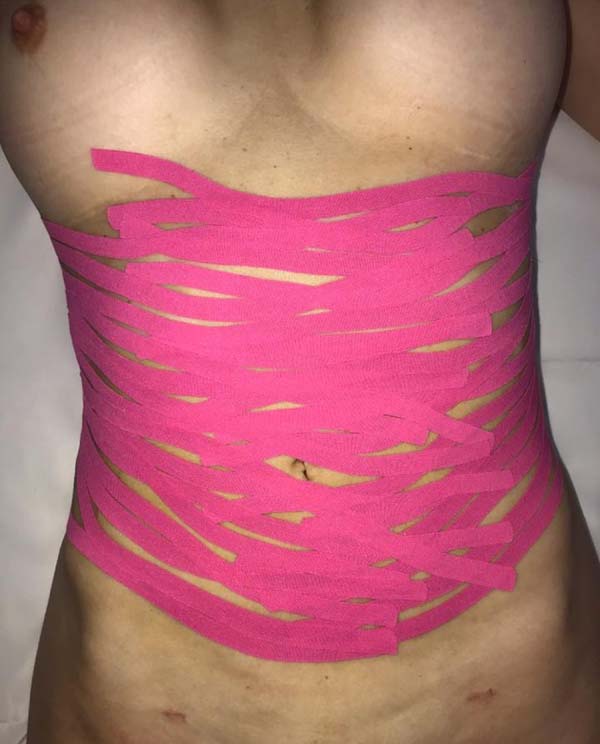

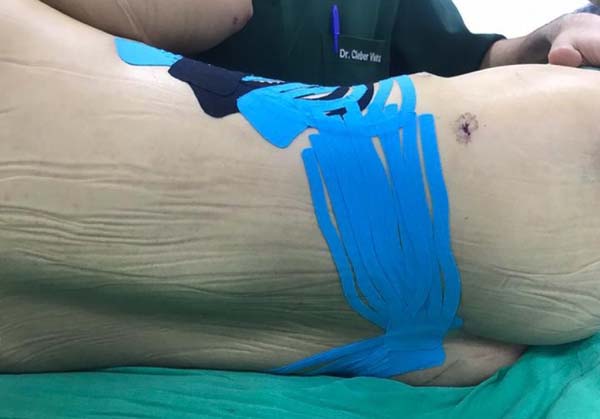



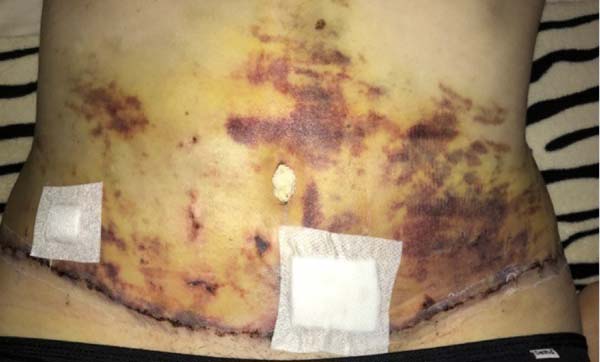

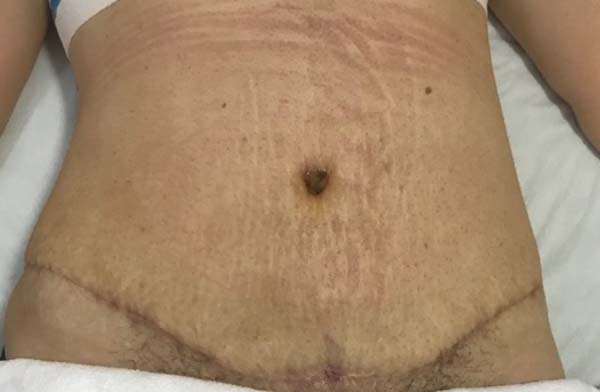

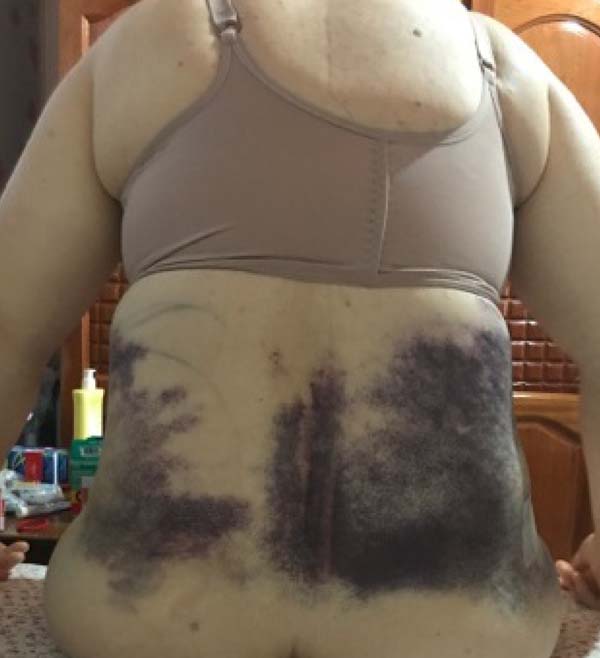

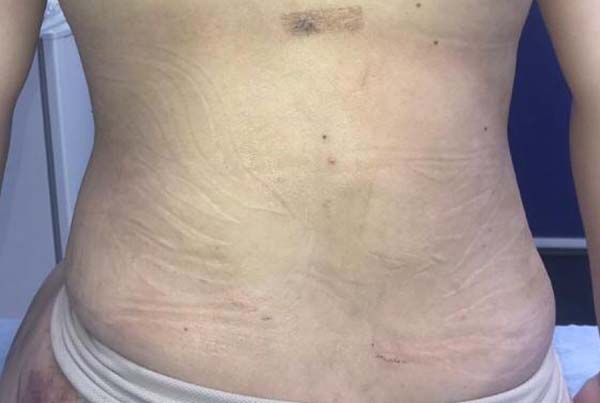

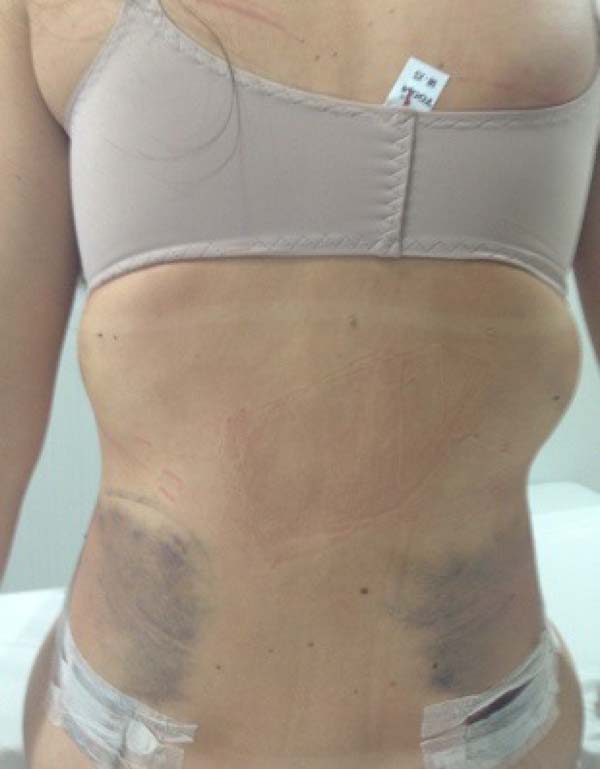

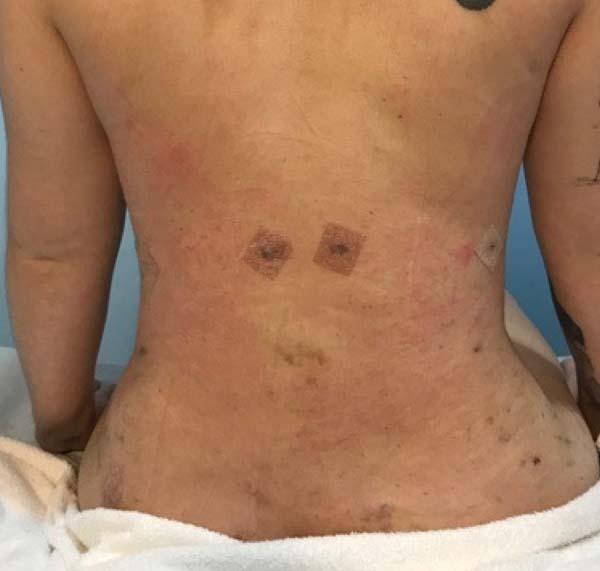


 Read in Portuguese
Read in Portuguese
 Read in English
Read in English
 PDF PT
PDF PT
 Print
Print
 Send this article by email
Send this article by email
 How to Cite
How to Cite
 Mendeley
Mendeley
 Pocket
Pocket
 Twitter
Twitter